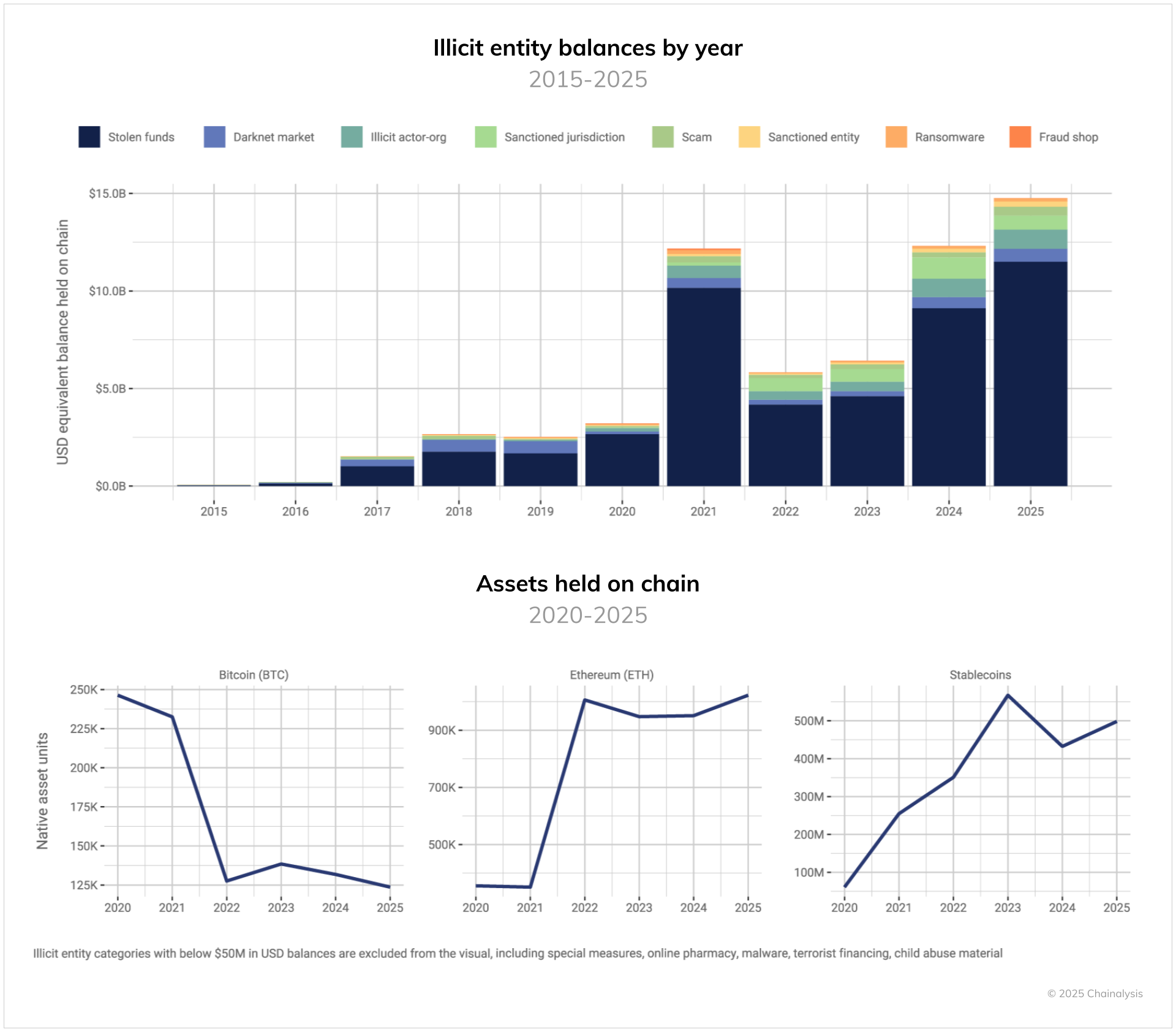
Chainalysis Identifies $75 Billion in Recoverable Cryptocurrencies Tied to Illicit Activities
Research from Chainalysis reveals that a significant portion of cryptocurrencies linked to illegal activities could be seized, impacting discussions surrounding national cryptocurrency reserves.
As the United States considers the development of national cryptocurrency reserves, comprehensive research from Chainalysis indicates that there may be recoverable on-chain assets valued at approximately $75 billion linked to illicit activities — a finding that could influence these discussions.
In a report released recently, Chainalysis estimated that cryptocurrency balances associated with illegal activities surpass $75 billion. This amount encompasses around $15 billion held by illicit actors directly and more than $60 billion in wallets with ties to those actors.
The blockchain analytics firm noted that operators and vendors in the darknet market control over $40 billion in cryptocurrencies on the blockchain.
Approximately 75% of the total illicit value is comprised of Bitcoin (BTC), although the share of stablecoins in such activities is increasing.
Stolen assets represent the largest share of illicit cryptocurrency holdings. Source: Chainalysis
Chainalysis associated its results with the Trump administration’s efforts to establish a Strategic Bitcoin Reserve and a Digital Asset Stockpile. These strategies aim to enhance federal cryptocurrency holdings through budget-neutral means, potentially involving asset forfeiture processes.
“The cryptocurrency ecosystem provides law enforcement with a unique chance: billions of dollars in illicit proceeds reside on public blockchains and can potentially be seized if authorities effectively coordinate their actions,” stated the report.
Jonathan Levin, Chainalysis’s Co-founder and CEO, told Bloomberg that these figures elevate “the potential for asset forfeiture to unprecedented levels,” suggesting this alters the perspectives of nations regarding such assets.
Source: Cointelegraph
Meanwhile, Canadian authorities recently seized around $40 million in digital assets from TradeOgre, a cryptocurrency exchange allegedly operating without registration and facilitating money laundering, which stirred backlash from the crypto community over regulatory overreach.
Blockchain Transparency Distorts Views on Crypto Crime
Although incidents of crypto-related crimes have surged in recent years, highlighted by notable hacks targeting prominent exchanges and service platforms, the overall scale remains minimal.
According to Chainalysis’s 2025 Crypto Crime Report, illicit transactions constituted just 0.14% of blockchain activity in 2024, continuing a trend of decline.
Less than 1% of all crypto transaction volume is linked to illicit activity. Source: Chainalysis
In contrast, the United Nations Office on Drugs and Crime (UNODC) estimates that 2%-5% of the global GDP is laundered through conventional financial systems.
Experts suggest that the reason crypto-related crimes attract skewed attention is the transparency inherent in blockchain technology, where each transaction is traceable. This situation enhances the detectability of illicit activities, making them more visible compared to cash-based or traditional banking crimes.
As an emerging technology, the cryptocurrency sector has also undergone increased scrutiny from regulators and law enforcement, amplifying perceptions of significant wrongdoing.


